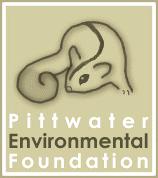Inbox and Environment News: Issue 286
October 23 - 29, 2016: Issue 286
Container Deposit Scheme Legislation Passes Parliament
October 20, 2016
Member for Pittwater Rob Stokes has welcomed the passage of the NSW Government’s 10-cent Container Deposit Scheme legislation through Parliament. From 1 July next year, cans and bottles between 150ml and 3 litres will be eligible for a 10-cent refund at collection points and depots across NSW. This landmark scheme will be the first of its type in NSW and is part of a broad package of initiatives being deployed by the NSW Government to help reduce the amount of litter in NSW by 40 per cent by 2020. “This is a vital initiative that will have real benefits for our local environment,” Rob Stokes said today. “Unfortunately our local creeks, waterways and beaches bear the brunt of drink container waste and this impacts our whole community. “The introduction of a refund scheme will help change the way people look at litter by offering a simple financial incentive to do the right thing. “After many years of talk and discussion this landmark scheme is now being introduced by the NSW Liberal Government. “More information on the scheme and how it will operate is available at www.epa.nsw.gov.au/waste/container-deposit-scheme.htm “This will be a generational change which I’m hoping everyone will get behind and support,” Rob Stokes said.
Applications Open For Illegal Dumping Clean-Up And Prevention Grants
Media release: 17 October 2016 - EPAThe NSW Environment Protection Authority (EPA) has today opened Round Four of the Illegal Dumping Clean-up and Prevention grants to applications from councils, public land managers and community groups across NSW to share in $500,000 in grants.
Under the NSW EPA’s Waste Less Recycle More initiative funding is made available for projects to clean-up and prevent illegal dumping of a wide range of waste, including asbestos and other building materials, as well as household junk commonly found dumped, like broken furniture, old mattresses and white goods.
The grants will also help to establish illegal dumping baseline data, which can be used to identify dumping trends and target hot spot problem areas like vacant residential lots and bush areas.
EPA Executive Director Waste and Resource Recovery Steve Beaman said the grants played an important role in enabling local communities to tackle illegal dumping.
“Illegal dumping is a serious problem in our state – it not only harms the environment, it can put human health at risk,” Mr Beaman said.
“The clean-up of illegal dumped waste is an expensive and time-consuming process. These grants can help councils and public land managers not only tackle existing problem areas, but also enable them to put in place preventative programs.”
In the three previous rounds of the program, a total of $4.36 million has been awarded to fund 71 projects.
To date, these projects have resulted in:- Over 5,000 tonnes of waste cleaned up, including over 200 tonnes of asbestos;
- 136 hotspots protected from further dumping;
- A range of preventative measures installed to deter dumping including 49 gates, 2554 meters of fencing, 23 earth mounds, 164 signs, 148 barriers and bollards, 862 tonnes of rock barrier and 111 surveillance devices;
- Increased regulatory action against illegal dumpers including 117 penalty notices, 44 clean-up notices, $100,848 in fines and $59,000 in court penalties.
In Round Four, a total of $500,000 will be awarded under three streams:- Illegal dumping clean-up and prevention projects: $50,000 - $150,000 for councils and public land managers to carry out such programs
- Establish illegal dumping baseline data: up to $20,000 for councils and public land managers
- Illegal dumping clean-up and prevention community partnerships: up to $50,000
Expressions of interest are open until 4pm, 8 November 2016.
More information about the Illegal Dumping Clean-up and Prevention grants is available at www.epa.nsw.gov.au/wastegrants/combat-illegal-dump.htm
- Over 5,000 tonnes of waste cleaned up, including over 200 tonnes of asbestos;
- 136 hotspots protected from further dumping;
- A range of preventative measures installed to deter dumping including 49 gates, 2554 meters of fencing, 23 earth mounds, 164 signs, 148 barriers and bollards, 862 tonnes of rock barrier and 111 surveillance devices;
- Increased regulatory action against illegal dumpers including 117 penalty notices, 44 clean-up notices, $100,848 in fines and $59,000 in court penalties.
- Illegal dumping clean-up and prevention projects: $50,000 - $150,000 for councils and public land managers to carry out such programs
- Establish illegal dumping baseline data: up to $20,000 for councils and public land managers
- Illegal dumping clean-up and prevention community partnerships: up to $50,000
Improvements To Planning Assessment
16.10.2016: Ministerial Media Release - The Hon. Rob Stokes MP, Minister for PlanningThe NSW Government will promote earlier and better engagement with the community in the assessment of large scale or complex projects, often classified as state significant development or state significant infrastructure. Environmental Impact Assessment is typically used in the assessments of mining developments, renewable energy projects, chemical and manufacturing industries, port facilities, electricity generating works, waste management facilities and major public transport projects. Planning Minister Rob Stokes today released a discussion paper with ideas on how to improve planning assessments, focused on building confidence in the assessment process. “Public confidence in the project assessment process is particularly important for state significant projects, where the impacts can be large and experienced over many years,” Mr Stokes said. “We need to ensure the community is involved in the assessment at the earliest practicable stage to improve the quality of engagement between all participants. “Better engagement results in better planning outcomes and builds confidence and trust in the assessment process.” Suggested changes put forward for discussion include:• Driving earlier and better engagement with affected communities• Improving the quality and consistency of EIA documents• Developing a standard approach for applying conditions to projects• Providing greater certainty and efficiency around decision-making, including assessment timeframes• Strengthening monitoring and reporting on project compliance• Improving accountability of EIA professionals.
To provide feedback and please visit www.planning.nsw.gov.au/improvingeia
SHOALHAVEN TO HOST 2017 SURF DIVE N SKI AUSTRALIAN JUNIOR SURFING TITLES
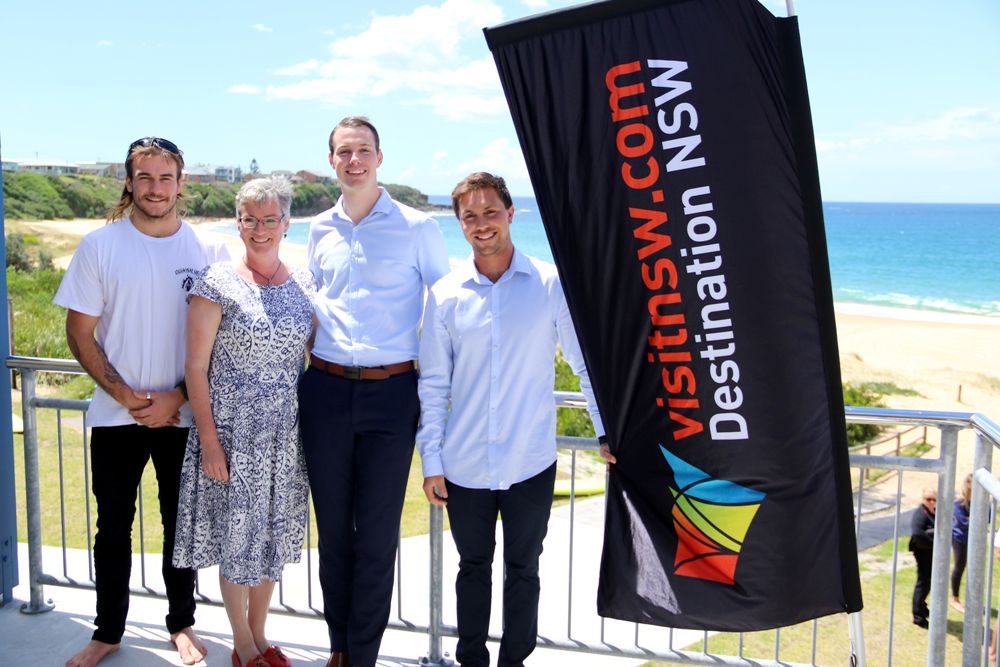
Pictured (L - R): Professional surfer and Culburra local Mikey Wright, Shoalhaven City Council Mayor Amanda Findley, Destination NSW Regional Event Development Coordinator Phil Wishart and Surfing NSW CEO Luke Madden. Photo by Ethan Smith / Surfing NSW.
CULBURRA BEACH, SHOALHAVENWednesday, 19 October 2016: from Surfing NSWAustralia’s best junior surfers will head to Shoalhaven in 2017 as part of the prestigious Surf Dive ‘N Ski Australian Junior Surfing Titles.
Surfing NSW, Surfing Australia and Shoalhaven City Council have aligned with The NSW Government, through its tourism and major events agency Destination NSW to bring the renowned junior event to the idyllic region.
Shoalhaven City Council Mayor Amanda Findley said, “We are excited to be hosting the Australian Junior Surfing Titles in the Shoalhaven and at beautiful Culburra Beach, Jervis Bay. We wish all the contestants well and hope their families and support crews enjoy what our City has to offer.”
Surfing NSW CEO Luke Madden is looking forward to bringing the illustrious junior titles to a region that has already spawned countless champions.
“The Shoalhaven region has long been considered one of the jewels of the NSW South Coast and over the years has spawned the likes of Owen, Mikey and Tyler Wright as well as Jordi and Ty Watson. It’s a great privilege to be able to bring an event of this caliber to the region and showcase it to competitors from all around Australia.”
Member for South Coast, Shelley Hancock, said the event would be a fantastic boost to the Shoalhaven.
“The South Coast is one of Australia’s best surfing regions, and it’s great to see the Australian Junior Surfing Titles coming to Culburra Beach next year. It’s a big win for local restaurants, cafes and businesses, with hundreds of visitors set to travel to the area.”
Six states are represented at the titles across Under 14, 16 and 18 age groups in both boys and girls divisions at the event that is considered the benchmark of junior surfing in the country. The Australian School Surfing Association Titles will be part of the event again in 2017.
With past winners including World Champions Steph Gilmore, Chelsea Hedges, Mick Fanning, Joel Parkinson, Mark Richards, Tom Carroll and Damian Hardman, a win in this year’s event is a legitimate stepping stone to world stage glory.

A Grand Design For The Ian Potter National Conservatory
17 October 2016: Media release- The Hon. Josh Frydenberg MP, Minister for the Environment and EnergyToday marks a significant step towards the realisation of a bold vision that will transform the Australian National Botanic Gardens.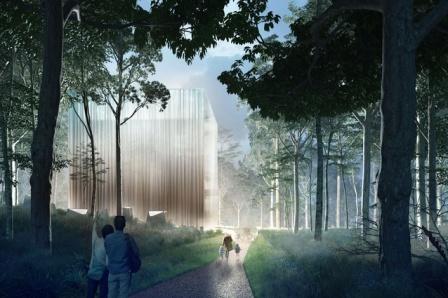
A design by acclaimed Sydney architects CHROFI has been selected for the Ian Potter National Conservatory, with the winning “hovering cube” design.
I congratulate CHROFI on their successful design, which the panel of jurors considered as being a piece of international merit, as well as leading in energy efficiency.
CHROFI’s conservatory will be a first for Australia and the world, creating a unique tropical plant conservatory, in our own backyard.
Visitors will be able to see our most remote and rare plants from areas including Kakadu and Christmas Island all under the one roof, grown with seeds from the National Seed Bank.
This will build on the Gardens’ leading work in protecting our native plants, with its collection boasting 78,000 native plants, more than 5,000 species and 300 threatened species.
Conserving our tropical plants in collections like this creates a critical safety net, and helps us to better understand the role they play in our habitat, allowing us to protect them for generations to come.
The Ian Potter National Conservatory will be a major drawcard for the Gardens and Canberra, with the Gardens’ annual visitation of 450,000 expected to jump by more than 20 per cent to 550,000.
This is the first major project from the Garden’s 20-year Master Plan, which was launched in June last year, and sets the garden in an outstanding stead for what lies ahead.
I sincerely thank the Ian Potter Foundation for its support of such an important national asset, providing $1.5 million in funding.
As a Government, we too are proud to support this project through a $5 million investment to help fund the Conservatory and a bushland nature walk.
It’s hard to imagine a design that could complement the beauty and intrigue of our national garden, but that’s what CHROFI has achieved – I look forward to seeing the completed Ian Potter National Conservatory in 2018.
Above: The competition winning concept for the Ian Potter National Conservatory, a “hovering cube” designed by CHROFI, McGregor Coxall and Atelier Ten. Image: Courtesy Parks Australia

NSW Coastal Council
October 13, 2016: Office of Environment & Heritage, NSW GovernmentDo you have the expertise to contribute to improved management of the NSW coastline?
The NSW Government is inviting applications for membership on the NSW Coastal Council from those with the relevant technical knowledge and expertise in:- coastal physical sciences, including geomorphology
- coastal engineering
- coastal land use planning
- coastal ecology
- social science
- economics
- local government management
- property law
- dispute resolution
- traditional and contemporary Aboriginal use and management of the coastal zone.
The Coastal Council will provide independent advice to the Minister administering the Coastal Management Act 2016 on coastal planning and management issues.
The Coastal Council will meet in Sydney as required, expected to be 6-8 times in the first year. Appointments to the Coastal Council are paid positions for an initial 18 month to 3 year term.
Members of the Coastal Council will be remunerated at $30,000 per annum. The Chairperson will receive $55,000 per annum. Annual fees will be paid on a pro-rata basis.
Members will be able to demonstrate capabilities to perform the following functions:- provide strategic advice to the Minister, including in relation to the Minister's functions under the Coastal Management Act 2016
- assess compliance by local councils with management objectives and the coastal management manual in preparing and reviewing coastal management programs
- conduct a performance audit of the implementation of a coastal management program of a local council
- provide advice to a public authority on coastal management issues.
To submit an expression of interest please send a cover letter and resume to: coastal.reforms@environment.nsw.gov.auApplications close 31 October 2016.For more information, email 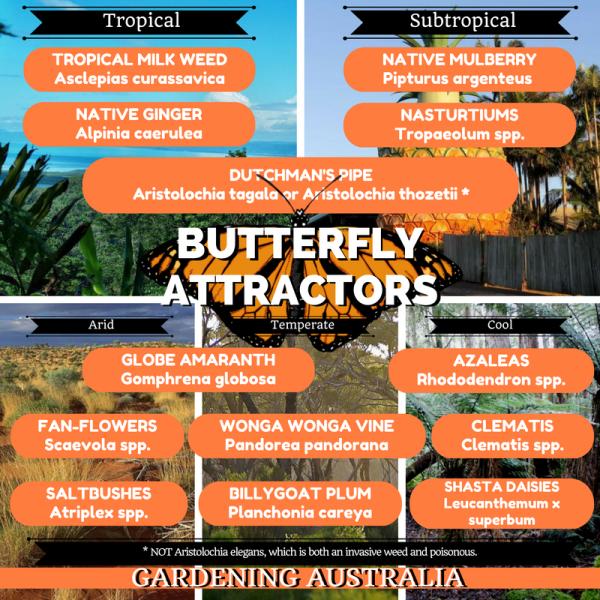
- coastal physical sciences, including geomorphology
- coastal engineering
- coastal land use planning
- coastal ecology
- social science
- economics
- local government management
- property law
- dispute resolution
- traditional and contemporary Aboriginal use and management of the coastal zone.
- provide strategic advice to the Minister, including in relation to the Minister's functions under the Coastal Management Act 2016
- assess compliance by local councils with management objectives and the coastal management manual in preparing and reviewing coastal management programs
- conduct a performance audit of the implementation of a coastal management program of a local council
- provide advice to a public authority on coastal management issues.

Water And Wastewater Infrastructure Upgrades For Regional NSW
Wednesday, 19 October 2016: Media Release - Hon. Niall Blair, Minister for Primary Industries, Minister for Lands and WaterMinister for Primary Industries, Lands and Water, Niall Blair, today approved a range of infrastructure upgrades to help clear a backlog of water and sewerage projects in regional areas, under the NSW Government’s $110 million Regional Water and Wastewater Backlog Program.
“This funding will help boost vital water and waste water services through new infrastructure builds and modernisation,” Mr Blair said.
“It’s important we have the right infrastructure in place for our regional communities who rely heavily on the reliable access to clean water and sewerage services for their future growth and prosperity.
“Over 30 projects have been approved, including a new water treatment plant and reticulation network for White Cliffs, a new sewerage collection process at Stuarts Point, and upgrades to the Wentworth sewerage system.
The Regional Water and Wastewater Backlog Program is part of the NSW Liberals and Nationals Government’s dedicated Restart NSW infrastructure fund that continues to deliver first-class infrastructure projects across the state.
“We announced the shortlist for this fund in February and I am pleased to be delivering this commitment for communities stretching from White Cliffs to Bourke to Biniguy, from Bulga to Yass and Wentworth. Right across regional NSW we continue to improve water and sewerage services,” Mr Blair said.
Applications for each project were successful in meeting strategic and economic measures in a competitive expression of interest process.
For more information visit: www.water.nsw.gov.au/urban-water/regional-water-andwaste-water-backlog-program
Come To The Harvest Festival On Liverpool Plains
Join the people of the Liverpool Plains and their supporters for a fun family-friendly weekend, bringing people together from far and wide to protect our food bowl and cultural heritage from Shenhua’s mega coal mine. Harvest Festival against Shenhua, Friday 6th Nov – Sunday 8th Nov, at Breeza on the Liverpool Plains. There will be live music, tours, kids activities, food, plus workshops on local farming, Gomeroi culture and heritage, the risks posed by the Shenhua mine, the skills to defend the Liverpool Plains against the mine… and more! IMPORTANT: REGISTRATION!To ensure you have the most up to date information about Harvest Festival, and to help organisers with numbers, it is important register to attend. Registering is quick and easy, simply click the "register here" link and fill out the form. WHEN AND WHEREHarvest Festival against Shenhua is taking place at “West Garawan” (next to the proposed Shenhua mine site) at Breeza on the Liverpool Plains. The program kicks off at 7pm Friday 6 November, and runs through to 4pm Sunday 8 November. Gates open 12pm Friday for camping set-up. WHAT TO BRINGToilets and adequate showers will be provided, otherwise come self-sufficient to camp on a hot open plain (eg. bring your tent, sleeping bag, torch, water bottle, and personal items). There are a range of alternative accommodation options in the nearby towns and villages of Quirindi, Gunnedah, Werris Creek or Spring Ridge. All of these options are roughly 20-30 minute drive from the event site. Food will be available on-site either to purchase or via suggested donation to cover costs. PROGRAMA full program detailing speakers, workshops, and other activities will be posted here once it is available.Each day there will be workshops, talks, tours, and fun for the kids throughout. It will be an inspiring and memorable weekend of good times, learning, and the chance to meet new people. On Friday and Saturday evenings there will be quality country music and the option to relax over dinner and a drink on your picnic rug. The workshop program will:- Offer education by locals and key experts in: local farming practices, water impacts and other threats of the mine, and local ecology – including koalas.
- Provide Gomeroi culture and heritage education by Gomeroi traditional owners.
- Sightseeing and photography tours of the beautiful and iconic Liverpool Plains.
- Focus on building capacity, preparedness and next steps to take action against Shenhua.
- Provide skills sharing in peaceful direct action.
DISTANCE TO HARVEST FESTIVAL:From Sydney: 4 ½ hours, via Pacific Motorway and New England HwyFrom Newcastle: 3 hours 15 minutes, via New England HwyFrom Tamworth: 50 minutes, via Werris Crk RdFrom Armidale: 2 hours, 10 minutes, via New England HwyFrom Lismore: 6 hours, via New England HwyFrom Brisbane: 7 1/2 hours, via New England HwyFrom Melbourne: 12 hours, via Newell HwyFrom Canberra: 7 hours, via Pacific Motorway and New England Hwy There is also a daily train service available from Sydney to Gunnedah.
- Offer education by locals and key experts in: local farming practices, water impacts and other threats of the mine, and local ecology – including koalas.
- Provide Gomeroi culture and heritage education by Gomeroi traditional owners.
- Sightseeing and photography tours of the beautiful and iconic Liverpool Plains.
- Focus on building capacity, preparedness and next steps to take action against Shenhua.
- Provide skills sharing in peaceful direct action.
Have Your Say On Increased Coal Production At The Mandalong Southern Extension Project
06.10.2016: Departmental Media Release - Department of Planning and EnvironmentA proposal by Centennial Mandalong Pty Ltd for an increase in maximum coal production at the Mandalong Southern Extension Project will be on exhibition from today for community consultation.
The proposed modification seeks to increase the maximum annual production of unprocessed coal from six to six-and-a-half million tonnes.
The Department of Planning and Environment is keen to hear the community’s views on the proposed modification for the mine near Morisset, approximately 35 kilometres southwest of Newcastle.
A spokesperson for the Department of Planning and Environment said the local community always has an opportunity to share their views.
“Community consultation is an integral part of the planning process and the applicant will have to respond to the feedback we receive,” the spokesperson said.
“This feedback is taken into consideration as part of the assessment.
“It’s easy to participate by going online and we encourage everyone to take a look and have their say.”
To make a submission or view the Modification Application and accompanying documents, visit www.majorprojects.planning.nsw.gov.au.
Submissions can be made from Thursday 6 October until Monday 24 October 2016.
Written submissions can also be made to:
Department of Planning and EnvironmentAttn: Director – Resource AssessmentsGPO Box 39Sydney NSW 2001
The Modification Application and accompanying documents are also available to view in person at:Department of Planning and Environment: Information Centre, Level 22, 320 Pitt Street, SydneyCentral Coast Council: 2 Hely Street, WyongLake Macquarie City Council: 126-138 Main Road, Speers PointNature Conservation Council: 14/338 Pitt Street, Sydney.
Have Your Say On Modifications To The Bengalla Continuation Project
06.10.2016: Departmental Media Release - Department of Planning and EnvironmentA proposal by Bengalla Mining Company Pty Ltd for modifications to the Bengalla Continuation Project will be on exhibition from today for community consultation.
The proposed modifications seek to change the locations of explosive storage and reloading facilities, a water supply pipeline from the Hunter River and top soil stockpiles from fixed positions to more flexible locations within the mine’s approved disturbance boundary.
The Department of Planning and Environment is keen to hear the community’s views on the proposed modifications for the project located four kilometres west of Muswellbrook.
A spokesperson for the Department of Planning and Environment said the local community always has an opportunity to share their views.
“Community consultation is an integral part of the planning process and the applicant will have to respond to the feedback we receive,” the spokesperson said.
“This feedback is taken into consideration as part of the assessment.
“It’s easy to participate by going online and we encourage everyone to take a look and have their say.”
To make a submission or view the Modification Application and other accompanying documents, visit www.majorprojects.planning.nsw.gov.au.
Submissions can be made from Thursday 6 October until Monday 24 October 2016.
Written submissions can also be made to:
Department of Planning and EnvironmentAttn: Director – Resource AssessmentsGPO Box 39Sydney NSW 2001
The Modification Application and other accompanying documents are also available to view in person at:Department of Planning and Environment: Information Centre, Level 22, 320 Pitt Street, SydneyMuswellbrook Shire Council: Administration Centre, 157 Maitland Street, MuswellbrookNature Conservation Council: 14/338 Pitt Street, Sydney.
Have Your Say On The Springvale Mine Water Treatment Project
26.09.2016: Departmental Media Release - Department of Planning and EnvironmentA proposal by Springvale Coal Pty Limited for a water treatment project will be on exhibition from today for community consultation.
The Department of Planning and Environment is keen to hear the community’s views on the proposal, which seeks to:
• construct a pipeline to transfer mine water to Mount Piper Power Station• treat this water at a new desalination plant at the power station• use treated water in the power station’s cooling water system• discharge any excess treated water through the Springvale Coal Services site• place remaining by-products from the treatment process at the Springvale Coal Services site. The Planning Assessment Commission granted Springvale coal mine a 13-year extension of its operations last September. As part of its approval, the Commission required the mine to reduce the salinity of its discharges into the water catchment over the long term.
This proposal would allow the mine to achieve these water quality improvements while also supplying the power station with most of the water it needs to operate.
A spokesperson for the Department of Planning and Environment said the local community always has an opportunity to share their views.
“Community consultation is an integral part of the planning process and the applicant will have to respond to the feedback we receive,” the spokesperson said.
“This feedback is taken into consideration as part of the assessment.
“It’s easy to participate by going online and we encourage everyone to take a look and have their say.”
To make a submission or view the Environmental Impact Statement (EIS), visit www.majorprojects.planning.nsw.gov.au.
Submissions can be made from Tuesday 27 September until Tuesday 8 November 2016.
Written submissions can also be made to:
Department of Planning and EnvironmentAttn: Director – Resource AssessmentsGPO Box 39Sydney NSW 2001
The application and EIS are also available to view in person at:• Department of Planning and Environment: Information Centre, Level 22, 320 Pitt Street, Sydney• Lithgow City Council: 180 Mort Street, Lithgow• Nature Conservation Council: Level 14, 338 Pitt Street, Sydney.________________________
Have Your Say Invincible Coal Mine - Southern Extension Modification
Exhibition Start 27/09/2016Exhibition End 08/11/2016
Documents at: majorprojects.planning.nsw.gov.au/job_id=7961
"Castlereagh Coal are seeking approval for the extension of mining to occur over a period of up to 8 years to provide for flexibility in the supply of nut coal through: • providing an option for Manildra to source all required nut coal directly from Invincible • continuing to source nut coal from a range of other existing sources supplemented by supply from Invincible where necessary or cost effective to do so • utilising a blended product using coal from the other seams within the Southern Extension Area where this can be used at the Shoalhaven Starches Plant.
The mining of coal in the target Lithgow Seam will necessarily involve the extraction of coal from the Lidsdale and Irondale Seams which are located above the Lithgow Seam. In total, there is an estimated 2.7 Million tonnes (Mt) of run-of-mine (ROM) coal in all seams down to, and including, the Lithgow Seam.
Investigations are currently being undertaken to assess whether coal from the Lidsdale or Irondale Seams can be used at the Shoalhaven Starches Plant when washed and blended with coal from the Lithgow Seam. Surplus coal from the Lidsdale and Irondale Seams which is unable to be used in the Shoalhaven Starches Plant will be sold to Mt Piper Power Station for energy production consistent with the previous mining operations at Invincible."
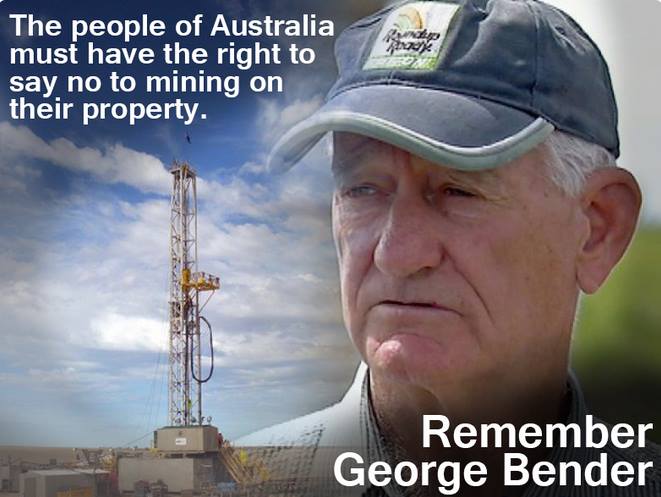

Have Your Say On The Extension Of Martins Creek Quarry
13.10.2016: Departmental Media Release-Department of Planning and EnvironmentA proposal by Buttai Gravel Pty Ltd to extend the Martins Creek Quarry near Maitland will be on exhibition from today for community consultation.
The Department of Planning and Environment is keen to hear the community’s views on the proposal, which seeks to:- clear 37.8 hectares of vegetation to expand the existing extraction area
- rehabilitate the quarry site progressively, and after extraction is completed
- extract up to 1.5 million tonnes of hard rock material per year
- increase the hours of operation
- transport processed material to market by road trucks and trains
- construct a new access driveway and bridge.
The project at Station Street in Martins Creek would create approximately 36 jobs when the quarry is fully operational (an increase from the current 24) and provide a substantial number of additional short-term construction jobs.
A spokesperson for the Department of Planning and Environment said the local community always has an opportunity to share their views.
“Community consultation is an integral part of the planning process and the applicant will have to respond to the feedback we receive,” the spokesperson said.
“This feedback is taken into consideration as part of the assessment.
“It’s easy to participate by going online and we encourage everyone to take a look and have their say.”
To make a submission or view the Environmental Impact Statement (EIS), visit www.majorprojects.planning.nsw.gov.au.
Submissions can be made from Thursday 13 October until Thursday 24 November 2016.
Written submissions can also be made to:Department of Planning and EnvironmentAttn: Director – Resource AssessmentsGPO Box 39Sydney NSW 2001
The application and EIS are also available to view in person at:- Department of Planning and Environment: Information Centre, Level 22, 320 Pitt Street, Sydney
- Dungog Shire Council: Council Administration Office,198 Dowling St, Dungog
- Maitland City Council: 285-287 High Street, Maitland
- Nature Conservation Council: 14/338 Pitt Street, Sydney.
- clear 37.8 hectares of vegetation to expand the existing extraction area
- rehabilitate the quarry site progressively, and after extraction is completed
- extract up to 1.5 million tonnes of hard rock material per year
- increase the hours of operation
- transport processed material to market by road trucks and trains
- construct a new access driveway and bridge.
- Department of Planning and Environment: Information Centre, Level 22, 320 Pitt Street, Sydney
- Dungog Shire Council: Council Administration Office,198 Dowling St, Dungog
- Maitland City Council: 285-287 High Street, Maitland
- Nature Conservation Council: 14/338 Pitt Street, Sydney.
Wilderness Horse Riding
Draft amendments to plans of managementDraft amendments to the plans of management for Far South Coast Escarpment Parks, Kosciuszko National Park and Mummel Gulf National Park and State Conservation Area are on public exhibition until 31 October 2016.
The plans of management for the above parks were amended in 2014 to enable a pilot program to trial horse riding in wilderness areas. The trial concluded in April 2016 and is currently being evaluated. The draft amendments propose to allow horse riding to continue in the same locations until 31 December 2017 while the evaluation is undertaken.
Have your sayTo view the draft amendments, visit the Environment NSW website.
Online ConsultationDate: Sep. 16 - Oct. 31, 2016Time: 9:00am — 5:00pm
More InformationReport illegal dumping
NSW Government
The RIDonline website lets you report the types of waste being dumped and its GPS location. Photos of the waste can also be added to the report.
The Environment Protection Authority (EPA), councils and Regional Illegal Dumping (RID) squads will use this information to investigate and, if appropriate, issue a fine or clean-up notice.
Penalties for illegal dumping can be up to $15,000 and potential jail time for anybody caught illegally dumping within five years of a prior illegal dumping conviction.
This is the first time RIDonline has been opened to the public. Since September last year, the EPA, councils, RID squads and public land managers have used it to report more than 20,000 tonnes of illegally dumped waste across more than 70 local government areas.
The NSW Government has allocated $58 million over five years to tackle illegal dumping as part of its $465.7 million Waste Less Recycle More initiative. NSW Premier Mike Baird has also committed to reducing the volume of litter by 40%, by 2020 to help keep NSW's environment clean.
Permaculture Northern BeachesFacebook page: www.facebook.com/permaculturenb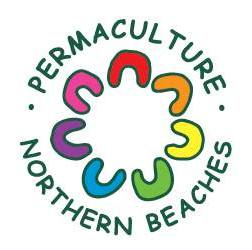 Want to know where your food is coming from?
Want to know where your food is coming from?
Do you like to enrich the earth as much as benefit from it?
Find out more here:
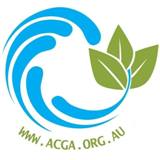 Avalon Community Garden
Avalon Community Garden
Community Gardens bring people together and enrich communities. They build a sense of place and shared connection.
Avalon Community Garden is a community led initiative to create accessible food gardens in public places throughout the Pittwater area. Our aim is to share skills and knowledge in creating fabulous local, organic food. But it's not just about great food. We also aim to foster community connection, stimulate creative ideas for community resilience and celebrate our abundance. Open to all ages and skills, our first garden is on the grounds of Barrenjoey High School (off Tasman Road ). Become part of this exciting initiative to change the world locally.
www.pcga.org.au Contact us info@pcg.org.au or Visit us atfacebook.com/acga.org; image artwork: www.gravey.com
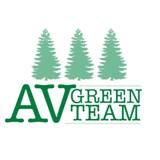 Av Green Team
Av Green Team
ProfileThis Youth-run, volunteer-based environment initiative has been attracting high praise from the founders of Living Ocean as much as other local environment groups recently.
Turning up for Beach Cleans, or starting their own, underlines an ‘action speaks louder than words’ ethos is at the core of this group.
Report illegal dumping
NSW Government
The RIDonline website lets you report the types of waste being dumped and its GPS location. Photos of the waste can also be added to the report.
The Environment Protection Authority (EPA), councils and Regional Illegal Dumping (RID) squads will use this information to investigate and, if appropriate, issue a fine or clean-up notice.
Penalties for illegal dumping can be up to $15,000 and potential jail time for anybody caught illegally dumping within five years of a prior illegal dumping conviction.
This is the first time RIDonline has been opened to the public. Since September last year, the EPA, councils, RID squads and public land managers have used it to report more than 20,000 tonnes of illegally dumped waste across more than 70 local government areas.
The NSW Government has allocated $58 million over five years to tackle illegal dumping as part of its $465.7 million Waste Less Recycle More initiative. NSW Premier Mike Baird has also committed to reducing the volume of litter by 40%, by 2020 to help keep NSW's environment clean.
 Want to know where your food is coming from?
Want to know where your food is coming from?
Do you like to enrich the earth as much as benefit from it?
Find out more here:
 Avalon Community Garden
Avalon Community Garden
Community Gardens bring people together and enrich communities. They build a sense of place and shared connection.
Avalon Community Garden is a community led initiative to create accessible food gardens in public places throughout the Pittwater area. Our aim is to share skills and knowledge in creating fabulous local, organic food. But it's not just about great food. We also aim to foster community connection, stimulate creative ideas for community resilience and celebrate our abundance. Open to all ages and skills, our first garden is on the grounds of Barrenjoey High School (off
www.pcga.org.
 Av Green Team
Av Green TeamNewport Community Gardens
Anyone interested in joining our community garden group please feel free to come and visit us on Sunday at 10am at the Woolcott Reserve in Newport!
Keep in Touch with what's happening on Newport Garden's Facebook:https://www.facebook.com/newportcg/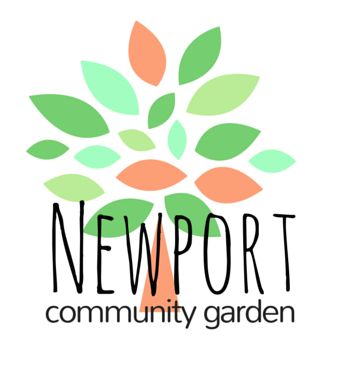
Think before you print ; A kilo of recycled paper creates around 1.8 kilograms of carbon emissions, without taking into account the emissions produced from transporting the paper. So, before you send a document to print, think about how many kilograms of carbon emissions you could save by reading it on screen.
Create a Habitat Stepping Stone!
Over 50 Pittwater households have already pledged to make a difference for our local wildlife, and you can too! Create a habitat stepping stone to help our wildlife out. It’s easy - just add a few beautiful habitat elements to your backyard or balcony to create a valuable wildlife-friendly stopover.
How it works
1) Discover: Visit the website below to find dozens of beautiful plants, nest boxes and water elements you can add to your backyard or balcony to help our local wildlife.
2) Pledge: Select three or more elements to add to your place. You can even show you care by choosing to have a bird appear on our online map.
3) Share: Join the Habitat Stepping Stones Facebook community to find out what’s happening in the natural world, and share your pics, tips and stories.
What you get
• Enjoy the wonders of nature, right outside your window.
• Free and discounted plants for your garden.
• A Habitat Stepping Stone plaque for your front fence.
• Local wildlife news and tips.
• Become part of the Pittwater Habitat Stepping Stones community.
Get the kids involved and excited about helping out!www.HabitatSteppingStones.org.au
No computer? No problem -Just write to the address below and we’ll mail you everything you need. Habitat Stepping Stones, Department of Environmental Sciences, Macquarie University NSW 2109
This project is assisted by the NSW Government through its Environmental Trust
Pittwater's Environmental Foundation
Pittwater Environmental Foundation was established in 2006 to conserve and enhance the natural environment of the Pittwater local government area through the application of tax deductible donations, gifts and bequests. The Directors were appointed by Pittwater Council.
About 33% (about 1600 ha excluding National Parks) of the original pre-European bushland in Pittwater remains in a reasonably natural or undisturbed condition. Of this, only about 400ha remains in public ownership. All remaining natural bushland is subject to encroachment, illegal clearing, weed invasion, feral animals, altered drainage, bushfire hazard reduction requirements and other edge effects. Within Pittwater 38 species of plants or animals are listed as endangered or threatened under the Threatened Species Act. There are two endangered populations (Koala and Squirrel Glider) and eight endangered ecological communities or types of bushland. To visit their site please click on logo above.
Avalon Boomerang Bags 2016 Workshops
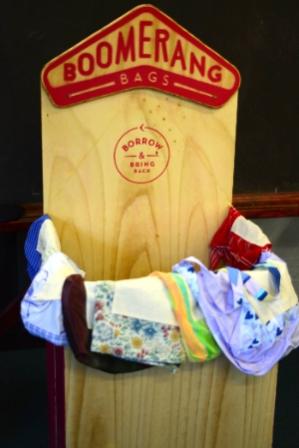 Boomerang Bag Working Bees run in Avalon Community Centre on Tuesdays 11:30am- 5pm.
Boomerang Bag Working Bees run in Avalon Community Centre on Tuesdays 11:30am- 5pm.
For those of you unable to come to workshops there are many other ways to get involved, just let us know you're willing by leaving a comment or sending us a message.
Pictured is a Boomerang Bag Box.
The boxes are located at:
Avalon OrganicsHertford ChemistAvalon WholefoodFresh Fruit and VegJohnson Bros Mitre TenAvalon MeatsAvalon Rec CentreWatch this space for another venue soon.
A huge thank you to everybody who has helped Boomerang Bags Avalon get this far. But the work is not over yet. Materials and more hands always welcome Facebook page Profile
Wildlife Carers and Organisations in Pittwater:
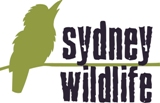 Sydney Wildlife rescues, rehabilitates and releases sick, injured and orphaned native wildlife. From penguins, to possums and parrots, native wildlife of all descriptions passes through the caring hands of Sydney Wildlife rescuers and carers on a daily basis. We provide a genuine 24 hour, 7 day per week emergency advice, rescue and care service.
Sydney Wildlife rescues, rehabilitates and releases sick, injured and orphaned native wildlife. From penguins, to possums and parrots, native wildlife of all descriptions passes through the caring hands of Sydney Wildlife rescuers and carers on a daily basis. We provide a genuine 24 hour, 7 day per week emergency advice, rescue and care service.
As well as caring for sick, injured and orphaned native wildlife, Sydney Wildlife is also involved in educating the community about native wildlife and its habitat. We provide educational talks to a wide range of groups and audiences including kindergartens, scouts, guides, a wide range of special interest groups and retirement villages. Talks are tailored to meet the needs and requirements of each group.
Found an injured native animal? We're here to help.
Keep the animal contained, warm, quiet and undisturbed. Do not offer any food or water.
Call Sydney Wildlife immediately on 9413 4300, or take the animal to your nearest vet. Generally there is no charge.
Find out more at: www.sydneywildlife.org.au
 Southern Cross Wildlife Care was launched over 6 years ago. It is the brainchild of Dr Howard Ralph, the founder and chief veterinarian. SCWC was established solely for the purpose of treating injured, sick and orphaned wildlife. No wild creature in need that passes through our doors is ever rejected.
Southern Cross Wildlife Care was launched over 6 years ago. It is the brainchild of Dr Howard Ralph, the founder and chief veterinarian. SCWC was established solely for the purpose of treating injured, sick and orphaned wildlife. No wild creature in need that passes through our doors is ever rejected.
People can assist SCWC by volunteering their skills ie: veterinary; medical; experienced wildlife carers; fundraising; "IT" skills; media; admin; website etc. We are always having to address the issue of finances as we are a non commercial veterinary service for wildlife in need, who obviously don't have cheque books in their pouches. It is a constant concern and struggle of ours when we are pre-occupied with the care and treatment of the escalating amount of wildlife that we have to deal with. Just becoming a member of SCWC for $45 a year would be a great help. Regular monthly donations however small, would be a wonderful gift and we could plan ahead knowing that we had x amount of funds that we could count on. Our small team of volunteers are all unpaid even our amazing vet Howard, so all funds raised go directly towards our precious wildlife. SCWC is TAX DEDUCTIBLE.
Find out more at: southerncrosswildlifecare.org.au/wp/
Australian Native Foods website: http://www.anfil.org.au/

Think before you print ; A kilo of recycled paper creates around 1.8 kilograms of carbon emissions, without taking into account the emissions produced from transporting the paper. So, before you send a document to print, think about how many kilograms of carbon emissions you could save by reading it on screen.
Create a Habitat Stepping Stone!
Over 50 Pittwater households have already pledged to make a difference for our local wildlife, and you can too! Create a habitat stepping stone to help our wildlife out. It’s easy - just add a few beautiful habitat elements to your backyard or balcony to create a valuable wildlife-friendly stopover.
How it works
1) Discover: Visit the website below to find dozens of beautiful plants, nest boxes and water elements you can add to your backyard or balcony to help our local wildlife.
2) Pledge: Select three or more elements to add to your place. You can even show you care by choosing to have a bird appear on our online map.
3) Share: Join the Habitat Stepping Stones Facebook community to find out what’s happening in the natural world, and share your pics, tips and stories.
What you get
• Enjoy the wonders of nature, right outside your window.
• Free and discounted plants for your garden.
• A Habitat Stepping Stone plaque for your front fence.
• Local wildlife news and tips.
• Become part of the Pittwater Habitat Stepping Stones community.
Get the kids involved and excited about helping out!www.HabitatSteppingStones.org.au
No computer? No problem -Just write to the address below and we’ll mail you everything you need. Habitat Stepping Stones, Department of Environmental Sciences, Macquarie University NSW 2109
This project is assisted by the NSW Government through its Environmental Trust
Pittwater's Environmental Foundation
Pittwater Environmental Foundation was established in 2006 to conserve and enhance the natural environment of the Pittwater local government area through the application of tax deductible donations, gifts and bequests. The Directors were appointed by Pittwater Council.
About 33% (about 1600 ha excluding National Parks) of the original pre-European bushland in Pittwater remains in a reasonably natural or undisturbed condition. Of this, only about 400ha remains in public ownership. All remaining natural bushland is subject to encroachment, illegal clearing, weed invasion, feral animals, altered drainage, bushfire hazard reduction requirements and other edge effects. Within Pittwater 38 species of plants or animals are listed as endangered or threatened under the Threatened Species Act. There are two endangered populations (Koala and Squirrel Glider) and eight endangered ecological communities or types of bushland. To visit their site please click on logo above.
Avalon Boomerang Bags 2016 Workshops
 Boomerang Bag Working Bees run in Avalon Community Centre on Tuesdays 11:30am- 5pm.
Boomerang Bag Working Bees run in Avalon Community Centre on Tuesdays 11:30am- 5pm.
For those of you unable to come to workshops there are many other ways to get involved, just let us know you're willing by leaving a comment or sending us a message.
Pictured is a Boomerang Bag Box.
The boxes are located at:
A huge thank you to everybody who has helped Boomerang Bags Avalon get this far. But the work is not over yet. Materials and more hands always welcome Facebook page Profile
Wildlife Carers and Organisations in Pittwater:
 Sydney Wildlife rescues, rehabilitates and releases sick, injured and orphaned native wildlife. From penguins, to possums and parrots, native wildlife of all descriptions passes through the caring hands of Sydney Wildlife rescuers and carers on a daily basis. We provide a genuine 24 hour, 7 day per week emergency advice, rescue and care service.
Sydney Wildlife rescues, rehabilitates and releases sick, injured and orphaned native wildlife. From penguins, to possums and parrots, native wildlife of all descriptions passes through the caring hands of Sydney Wildlife rescuers and carers on a daily basis. We provide a genuine 24 hour, 7 day per week emergency advice, rescue and care service.
As well as caring for sick, injured and orphaned native wildlife, Sydney Wildlife is also involved in educating the community about native wildlife and its habitat. We provide educational talks to a wide range of groups and audiences including kindergartens, scouts, guides, a wide range of special interest groups and retirement villages. Talks are tailored to meet the needs and requirements of each group.
Found an injured native animal? We're here to help.
Keep the animal contained, warm, quiet and undisturbed. Do not offer any food or water.
Call Sydney Wildlife immediately on 9413 4300, or take the animal to your nearest vet. Generally there is no charge.
Find out more at: www.sydneywildlife.org.au
 Southern Cross Wildlife Care was launched over 6 years ago. It is the brainchild of Dr Howard Ralph, the founder and chief veterinarian. SCWC was established solely for the purpose of treating injured, sick and orphaned wildlife. No wild creature in need that passes through our doors is ever rejected.
Southern Cross Wildlife Care was launched over 6 years ago. It is the brainchild of Dr Howard Ralph, the founder and chief veterinarian. SCWC was established solely for the purpose of treating injured, sick and orphaned wildlife. No wild creature in need that passes through our doors is ever rejected.
People can assist SCWC by volunteering their skills ie: veterinary; medical; experienced wildlife carers; fundraising; "IT" skills; media; admin; website etc. We are always having to address the issue of finances as we are a non commercial veterinary service for wildlife in need, who obviously don't have cheque books in their pouches. It is a constant concern and struggle of ours when we are pre-occupied with the care and treatment of the escalating amount of wildlife that we have to deal with. Just becoming a member of SCWC for $45 a year would be a great help. Regular monthly donations however small, would be a wonderful gift and we could plan ahead knowing that we had x amount of funds that we could count on. Our small team of volunteers are all unpaid even our amazing vet Howard, so all funds raised go directly towards our precious wildlife. SCWC is TAX DEDUCTIBLE.
Find out more at: southerncrosswildlifecare.org.au/wp/
Australian Native Foods website: http://www.anfil.org.au/
Quantum Computers: 10-Fold Boost In Stability Achieved
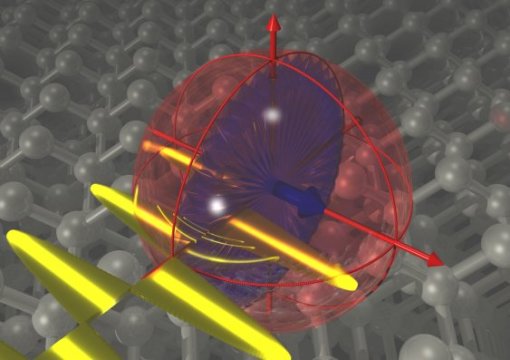
Artist's impression of a single-atom electron spin, hosted in a silicon crystal and dressed by an oscillating electromagnetic field. Image courtesy of University of New South Wales
October 19, 2016: University of New South Wales
UNSW engineers have created a new quantum bit that remains in a stable superposition for 10 times longer than previously achieved, dramatically expanding the number of calculations that could be performed in a future silicon quantum computer.
Engineers at the University of New South Wales (UNSW) have created a new quantum bit that remains in a stable superposition for 10 times longer than previously achieved, dramatically expanding the time during which calculations could be performed in a future silicon quantum computer.
The new quantum bit, made up of the spin of a single atom in silicon and merged with an electromagnetic field -- known as 'dressed qubit' -- retains quantum information for much longer that an 'undressed' atom, opening up new avenues to build and operate the superpowerful quantum computers of the future.
The results are published today in the international journal, Nature Nanotechnology.
"We have created a new quantum bit where the spin of a single electron is merged together with a strong electromagnetic field," said Arne Laucht, a Research Fellow at the School of Electrical Engineering & Telecommunications at UNSW, and lead author of the paper. "This quantum bit is more versatile and more long-lived than the electron alone, and will allow us to build more reliable quantum computers."
Building a quantum computer has been called the 'space race of the 21st century' -- a difficult and ambitious challenge with the potential to deliver revolutionary tools for tackling otherwise impossible calculations, such as the design of complex drugs and advanced materials, or the rapid search of massive, unsorted databases.
Its speed and power lie in the fact that quantum systems can host multiple 'superpositions' of different initial states, which in a computer are treated as inputs which, in turn, all get processed at the same time.
"The greatest hurdle in using quantum objects for computing is to preserve their delicate superpositions long enough to allow us to perform useful calculations," said Andrea Morello, leader of the research team and a Program Manager in the ARC Centre for Quantum Computation & Communication Technology (CQC2T) at UNSW. "Our decade-long research program had already established the most long-lived quantum bit in the solid state, by encoding quantum information in the spin of a single phosphorus atom inside a silicon chip, placed in a static magnetic field."
What Laucht and colleagues did was push this further: "We have now implemented a new way to encode the information: we have subjected the atom to a very strong, continuously oscillating electromagnetic field at microwave frequencies, and thus we have 'redefined' the quantum bit as the orientation of the spin with respect to the microwave field."
The results are striking: since the electromagnetic field steadily oscillates at a very high frequency, any noise or disturbance at a different frequency results in a zero net effect. The researchers achieved an improvement by a factor of 10 in the time span during which a quantum superposition can be preserved.
Specifically, they measured a dephasing time of T2*=2.4 milliseconds -- a result that is 10-fold better than the standard qubit, allowing many more operations to be performed within the time span during which the delicate quantum information is safely preserved.
"This new 'dressed qubit' can be controlled in a variety of ways that would be impractical with an 'undressed qubit'," added Morello. "For example, it can be controlled by simply modulating the frequency of the microwave field, just like in an FM radio. The 'undressed qubit' instead requires turning the amplitude of the control fields on and off, like an AM radio.
"In some sense, this is why the dressed qubit is more immune to noise: the quantum information is controlled by the frequency, which is rock-solid, whereas the amplitude can be more easily affected by external noise."
Since the device is built upon standard silicon technology, this result paves the way to the construction of powerful and reliable quantum processors based upon the same fabrication process already used for today's computers.
The UNSW team has taken the first step in building the world's first quantum computer in silicon.
"Quantum computing is one of the great challenges of the 21st century, manipulating nature at a subatomic level and pushing into the very edge of what is possible," said Mark Hoffman, UNSW's Dean of Engineering. "To have a team that leads the world in this field, and consistently delivers firsts, is a testament to the extraordinary talent we have assembled in Australia at UNSW."
A functional quantum computer would allow massive increases in speed and efficiency for certain computing tasks -- even when compared with today's fastest silicon-based 'classical' computers. In a number of key areas -- such as searching large databases, solving complicated sets of equations, and modelling atomic systems such as biological molecules and drugs -- they would far surpass today's computers. They would also be enormously useful in the finance and healthcare industries, and for government, security and defence organisations.
Quantum computers could identify and develop new medicines by greatly accelerating the computer-aided design of pharmaceutical compounds (and minimising lengthy trial and error testing), and develop new, lighter and stronger materials spanning consumer electronics to aircraft. They would also make possible new types of computational applications and solutions that are beyond our ability to foresee.
Other researchers who contributed to the work include members of Morello's CQC2T team at UNSW -- Rachpon Kalra, Stephanie Simmons, Juan Dehollain, Juha Muhonen, Fahd Mohiyaddin and Solomon Freer; Andrew Dzurak and Fay Hudson at the Australian National Fabrication Facility; David Jamieson and Jeffrey McCallum from the CQC2T University of Melbourne team; and Kohei Itoh of Japan's Keio University.
Materials provided by University of New South Wales. Original written by Wilson da Silva.
Arne Laucht, Rachpon Kalra, Stephanie Simmons, Juan P. Dehollain, Juha T. Muhonen, Fahd A. Mohiyaddin, Solomon Freer, Fay E. Hudson, Kohei M. Itoh, David N. Jamieson, Jeffrey C. McCallum, Andrew S. Dzurak, A. Morello. A dressed spin qubit in silicon. Nature Nanotechnology, 2016; DOI: 10.1038/nnano.2016.178

ACCC Invites Feedback On News Corporation’s Proposed Acquisition Of APN's Australian Regional Media Division
6 October 2016: ACCC - Media Release
The Australian Competition and Consumer Commission has released a Statement of Issues on the proposed acquisition of Australian Regional Media (ARM) from APN News and Media (ASX: APN) by News Corporation (ASX:NWS).
The proposed acquisition would combine the two main newspaper publishers in Queensland, adding ARM’s community and regional publications in Queensland and northern New South Wales to News’ extensive portfolio of community, regional, state, and national publications. The ACCC is investigating the effect that this would have on competition for both readers and advertisers.
“One area of focus is the loss of competition between ARM’s paid regional newspapers and News’ The Courier Mail. If the proposed acquisition proceeds, News will own both The Courier Mail and the local paid newspaper in nearly every city or town in Queensland. This may result in a reduction of quality and diversity of content available to readers. Reinforcing that concern is that both News and ARM have a strong presence in online news through their websites associated with the Queensland newspapers,” ACCC Chairman Rod Sims said.
“The ACCC is seeking to understand whether the competitive tension between News and ARM is an important factor in maintaining quality and range of content, or whether the threat of readers shifting to alternatives, particularly alternative online news sites, will competitively constrain News after the acquisition.”
ARM publishes paid daily regional papers in Mackay, Rockhampton, Gladstone, Bundaberg, Hervey Bay, Gympie, Sunshine Coast, Toowoomba, Ipswich and Warwick. The ACCC will be looking closely at these areas.
“In particular the ACCC will test how important diversity of content and opinion is to readers when assessing the extent of competition between papers,” Mr Sims said.
ARM and News both also publish overlapping community papers in Caboolture/Bribie Island, south west Brisbane, Brisbane northern bayside, Logan, and Tweed Heads/southern Gold Coast. These are mostly free papers with a strong local focus. The ACCC is seeking to assess the effect on readers and local advertisers in those areas, and to assess whether the reduction in competition is significant.
“The ACCC will be assessing the importance of diversity of local content in these competing community publications. The ACCC is also seeking to understand whether advertising opportunities on other media platforms, such as local radio, pamphlets, and online, will constrain prices for advertising in the ARM and News community newspapers,” Mr Sims said.
The ACCC invites further submissions from industry participants in response to the Statement of Issues by 27 October 2016.
Submissions should be forwarded electronically (preferably in PDF format) to mergers@accc.gov.au with the title Submission re News/ARM proposed acquisition (attention Lisa Campbell/David Wang).
Alternatively submissions may be forwarded by fax to 02 92315652 or by mail to Mergers Branch, ACCC, GPO Box 3648, Sydney NSW 2001.The ACCC expects to announce its final decision on 1 December 2016.
Further information and the ACCC’s Statement of Issues is available on the public register:
BackgroundNews is a global media company with subscription television, magazines, newspapers and publishing operations and interests. In Australia, News publishes a number of state, regional and community newspapers as well as its national publication The Australian. It also publishes websites associated with many of its newspapers as well as news.com.au.
APN is an ASX-listed Australian company with media, radio, publishing and digital assets in Australia, and outdoor advertising assets in Australia, New Zealand and Hong Kong. The ARM division of APN, which is proposed to be sold to News, includes a large number of mostly regional publications in Queensland and northern NSW, including 12 paid daily, 14 paid non-daily and 32 free non-daily community newspapers.
APN's radio and outdoor assets are not part of the proposed acquisition and will be retained by APN.
A full list of ARM’s print publications is set out below:
North Queensland (Mackay region)Daily Mercury, The Midweek, Whitsunday Times, and Whitsunday Coast Guardian.
Central QueenslandThe Morning Bulletin, The Observer, Capricorn Coast Mirror, Central Telegraph, and Central Queensland News.
Wide Bay BurnettNewsMail, Fraser Coast Chronicle, The Gympie Times, Guardian, Isis Town & Country, Central & North Burnett Times, Hervey Bay Observer, The Maryborough Herald, Cooloola Advertiser, and Hervey Bay Independent.
South-East Queensland - Sunshine CoastSunshine Coast Daily, Sunshine Coast Sunday, Noosa News, Coolum & North Shore News, Maroochy Weekly, Kawana Weekly, Caloundra Weekly, Nambour Weekly, and Buderim Chronicle.
South-East Queensland (Greater Brisbane and Ipswich)Caboolture News, Bribie Weekly, The Logan Reporter, The Satellite, Bayside Northern Suburbs Star, The Queensland Times, and The Ipswich Advertiser.
South-West QueenslandWarwick Daily News, The Chronicle, Stanthorpe Border Post, Dalby Herald, Gatton, Lockyer and Brisbane Valley Star, Laidley Plainland Leader, South Burnett Times, Southern Downs Weekly, Balonne Beacon, The Western Star, Western Times, Chinchilla News and Murilla Advertiser.
Northern NSW (Gold Coast, Tweed and northern NSW)Tweed Daily News, Tweed Daily News – Community Edition, The Northern Star, The Daily Examiner, The Woolgoolga Advertiser, Byron Shire News, Ballina Shire Advocate, Lismore Echo, The Richmond River Express Examiner, Coastal Views, and The Coffs Coast Advocate.
Specialist publicationsSurat Basin News, Rural Weekly (five editions, including a Northern Territory edition), Big Rigs, CQ Industry, Style Magazine, Seniors Newspaper (eight different editions distributed in South-East Queensland and NSW), and APN Educational Media publications (business-to-business publisher of Education Review, Nursing Review, Aged Care Insite and Campus Review).
Have Your Say On A Mixed Use Development At Barangaroo South
29.09.2016: Departmental Media Release - Department of Planning and EnvironmentThree separate proposals by Lend Lease Pty Ltd for residential buildings at 51A Hickson Road, Barangaroo will be on exhibition from today for community consultation.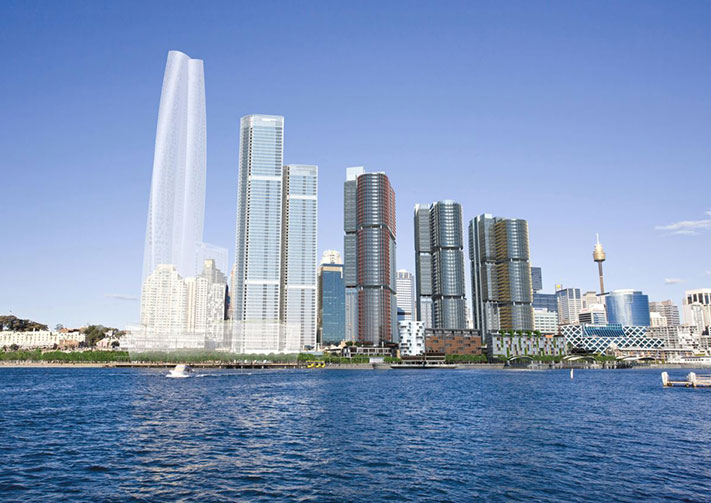
The Department of Planning and Environment is keen to hear the community’s views on the proposals, which seek to construct three residential buildings of 72, 60 and 29 storeys.
These will provide 775 new apartments, of which 39 apartments will be for key worker housing in the 29 storey building.
Each of the buildings will provide retail space and will include underground car spaces, storage and rubbish facilities.
A spokesperson for the Department of Planning and Environment said the local community always has an opportunity to share their views.
“Community consultation is an integral part of the planning process and the applicant will have to respond to the feedback we receive,” the spokesperson said.
“This feedback is taken into consideration as part of the assessment.
“It’s easy to participate by going online and we encourage everyone to take a look and have their say.”
To make a submission or view the Environmental Impact Statement (EIS), visit www.majorprojects.planning.nsw.gov.au.
Barangaroo SouthResidential Building R4A EIS ExhibitionBarangaroo SouthResidential Building R4B EIS ExhibitionBarangaroo South
Submissions can be made from Thursday 29 September until Monday 14 November 2016.
Written submissions can also be made to:Department of Planning and EnvironmentAttn: Director – Key Sites AssessmentsGPO Box 39Sydney NSW 2001
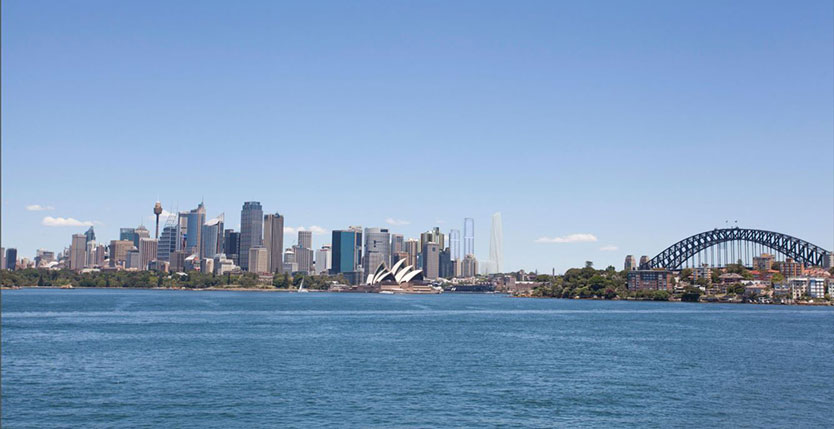


Lucy Turnbull AO Appointed Adjunct Professor At UNSW
October 17, 2016: UNSW - by Fran StrachanChief Commissioner of the Greater Sydney Commission Lucy Turnbull AO has been appointed Adjunct Professor at UNSW’s Faculty of Built Environment where she will share her significant skills with the next generation of city makers. 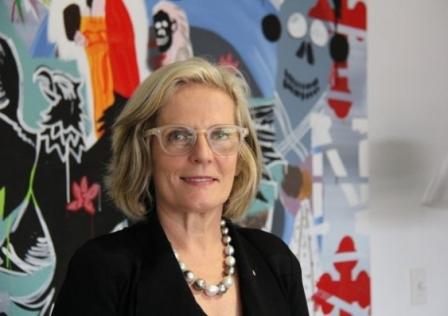
Dean of the Faculty, Professor Helen Lochhead, announced Turnbull’s appointment at Engaging Women in Built Environment, a UNSW event aimed at connecting academics with industry and encouraging women to take up leadership roles across architecture, design, planning and development.
“I’m honoured to be appointed to this role in the Faculty of Built Environment. This is a critical time for urban design, architecture and planning in Sydney and I look forward to the opportunity to work with UNSW students designing the future of our city,” Turnbull said.
Turnbull is an MBA graduate from UNSW’s Australian Graduate School of Management and was the first female Lord Mayor of Sydney from 2003 to 2004. She chaired the Committee for Sydney from 2012 to 2015 before taking up her role as Chief Commissioner of the Greater Sydney Commission, a new independent body established by the NSW state government to deliver effective metropolitan planning for the Greater Sydney Region.
“In her role as Chief Commissioner, Lucy is leading the future of district planning for Sydney to 2056, which is the environment many of our students will contribute to when they graduate,” Professor Lochhead said.
In her UNSW position, which will be concurrent with her Greater Sydney Commission role, Turnbull will present guest lectures to planning, urban design and urban renewal students and develop interdisciplinary education and research opportunities across the University.
In particular she will be exploring her interests in female-friendly cities, access to social infrastructure and the critical relationship of city economics with urban planning.
“Lucy brings expertise in the complex economic and governance interdependencies of city making and I look forward to her sharing that knowledge with students,” said Professor Lochhead.
Turnbull is a self-described urbanist, businesswoman and philanthropist with a long standing interest in cities and technological and social innovation. In 2011 she became an Officer of the Order of Australia for distinguished service to the community, local government and business and was awarded an honorary Doctorate of Business by UNSW in 2012. Turnbull is also the author of Sydney: A Biography of a City published by Random House Australia in 1999.
Photo: UNSW Adjunct Professor Lucy Turnbull will work with UNSW students to design the future of Sydney. Photo: Greater Sydney Commission.

California Condors' Genetic Bottleneck: New Evidence
October 16, 2016: Central Ornithology Publication Office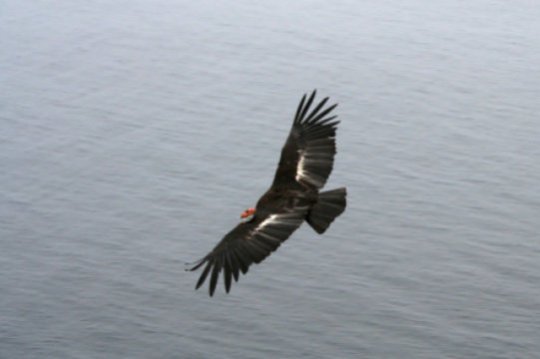
California Condors have lost 80% of their genetic diversity. Credit: J. D'EliaThe existing genetic diversity of California Condors, all of which are descended from just 14 individuals, is strikingly low. But were condors more genetically diverse before their 20th century population crash, or were they already, as one paleontologist put it in the 1940s, a Pleistocene relict with "one wing in the grave"? The researchers behind a new study in The Condor: Ornithological Applications analyzed samples from condor museum specimens dating back to the 1820s and found that the historical population was surprisingly diverse, but that a substantial amount of that diversity was lost in the last two centuries. This finding supports the hypothesis that condors were fairly widespread and abundant prior to increases in human-caused mortality, which likely drove their numbers down quickly in the 1800s and early 1900s.
Analyzing the museum specimens' mitochondrial DNA, Jesse D'Elia of the U.S. Fish and Wildlife Service and his colleagues showed that more than 80% of the unique haplotypes present in the birds of the past have disappeared from the gene pool of condors alive today. The low amount of genetic diversity in the current population, which is descended from only 14 genetic founders from the captive flock, was already well known, but this was the first study to show that there was substantial genetic diversity in the historical population.
D'Elia and his colleagues used tissue samples from 93 California Condor specimens collected between 1825 and 1984 in locations ranging from Mexico to Washington state. "The value of museum collections for answering important questions when considering population translocations and species' reintroductions cannot be overstated," says D'Elia. "They provide a direct window into a population's history and as new genetic and genomic tools continue to be developed the value of these specimens only increases."
The genetic bottleneck resulted in inbreeding and decreased fitness, and condors will continue to require intensive management for some time to recover. But there is a possible upside for condor conservation in the results of this study -- D'Elia and his colleagues did not find any evidence that the now-vanished Pacific Northwest population was genetically isolated from the condors in California. If Northwest condors weren't on a separate evolutionary track, there's no reason not to release today's captive-bred condors into those unoccupied areas of their historical range.
"These results document a significant decline in mitochondrial DNA diversity over the past century, which also suggests a corresponding reduction in nuclear DNA diversity," according to Jeff Johnson of the University of North Texas, an expert on incorporating genetic information into conservation efforts. "Therefore, the careful attention made to maintain founder lineages and prevent inbreeding is critical for improving the likelihood of producing an eventual self-sustainable wild population. Those involved in the California Condor recovery efforts are leading experts in captive propagation and release, and the methods developed and used, particularly those benefiting from whole nuclear genome approaches, acknowledge the importance of maintaining existing genomic diversity both at the individual and population level. These methods will also benefit other endangered species captive breeding programs that possess similar demographic histories."
Jesse D'Elia, Susan M. Haig, Thomas D. Mullins, Mark P. Miller. Ancient DNA reveals substantial genetic diversity in the California Condor (Gymnogyps californianus) prior to a population bottleneck. The Condor, 2016; 118 (4): 703 DOI: 10.1650/CONDOR-16-35.1

Mystery Species Hidden In Cave Art Appears To Be Unknown Bison-Cattle Hybrid
October 18, 2016: University of AdelaideAncient DNA research has revealed that Ice Age cave artists recorded a previously unknown hybrid species of bison and cattle in great detail on cave walls more than 15,000 years ago.
The mystery species, known affectionately by the researchers as the Higgs Bison* because of its elusive nature, originated over 120,000 years ago through the hybridisation of the extinct Aurochs (the ancestor of modern cattle) and the Ice Age Steppe Bison, which ranged across the cold grasslands from Europe to Mexico.
Research led by the Australian Centre for Ancient DNA (ACAD) at the University of Adelaide, published today in Nature Communications, has revealed that the mystery hybrid species eventually became the ancestor of the modern European bison, or wisent, which survives in protected reserves such as the Białowieża forest between Poland and Belarus.
"Finding that a hybridisation event led to a completely new species was a real surprise -- as this isn't really meant to happen in mammals," says study leader Professor Alan Cooper, ACAD Director. "The genetic signals from the ancient bison bones were very odd, but we weren't quite sure a species really existed -- so we referred to it as the Higgs Bison."
The international team of researchers also included the University of California, Santa Cruz (UCSC), Polish bison conservation researchers, and palaeontologists across Europe and Russia. They studied ancient DNA extracted from radiocarbon-dated bones and teeth found in caves across Europe, the Urals, and the Caucasus to trace the genetic history of the populations.
They found a distinctive genetic signal from many fossil bison bones, which was quite different from the European bison or any other known species.
Radiocarbon dating showed that the mystery species dominated the European record for thousands of years at several points, but alternated over time with the Steppe bison, which had previously been considered the only bison species present in Late Ice Age Europe.
"The dated bones revealed that our new species and the Steppe Bison swapped dominance in Europe several times, in concert with major environmental changes caused by climate change," says lead author Dr Julien Soubrier, from the University of Adelaide. "When we asked, French cave researchers told us that there were indeed two distinct forms of bison art in Ice Age caves, and it turns out their ages match those of the different species. We'd never have guessed the cave artists had helpfully painted pictures of both species for us."
The cave paintings depict bison with either long horns and large forequarters (more like the American bison, which is descended from the Steppe bison) or with shorter horns and small humps, more similar to modern European bison.
"Once formed, the new hybrid species seems to have successfully carved out a niche on the landscape, and kept to itself genetically," says Professor Cooper. "It dominated during colder tundra-like periods, without warm summers, and was the largest European species to survive the megafaunal extinctions. However, the modern European bison looks genetically quite different as it went through a genetic bottleneck of only 12 individuals in the 1920s, when it almost became extinct. That's why the ancient form looked so much like a new species."
Professor Beth Shapiro, UCSC, first detected the mystery bison as part of her PhD research with Professor Cooper at the University of Oxford in 2001. "Fifteen years later it's great to finally get to the full story out. It's certainly been a long road, with a surprising number of twists," Professor Shapiro says.
*The Higgs Boson is a subatomic particle suspected to exist since the 1960s and only confirmed in 2012.
Julien Soubrier, Graham Gower, Kefei Chen, Stephen M. Richards, Bastien Llamas, Kieren J. Mitchell, Simon Y. W. Ho, Pavel Kosintsev, Michael S. Y. Lee, Gennady Baryshnikov, Ruth Bollongino, Pere Bover, Joachim Burger, David Chivall, Evelyne Crégut-Bonnoure, Jared E. Decker, Vladimir B. Doronichev, Katerina Douka, Damien A. Fordham, Federica Fontana, Carole Fritz, Jan Glimmerveen, Liubov V. Golovanova, Colin Groves, Antonio Guerreschi, Wolfgang Haak, Tom Higham, Emilia Hofman-Kamińska, Alexander Immel, Marie-Anne Julien, Johannes Krause, Oleksandra Krotova, Frauke Langbein, Greger Larson, Adam Rohrlach, Amelie Scheu, Robert D. Schnabel, Jeremy F. Taylor, Małgorzata Tokarska, Gilles Tosello, Johannes van der Plicht, Ayla van Loenen, Jean-Denis Vigne, Oliver Wooley, Ludovic Orlando, Rafał Kowalczyk, Beth Shapiro, Alan Cooper. Early cave art and ancient DNA record the origin of European bison. Nature Communications, 2016; 7: 13158 DOI:10.1038/ncomms13158
2016 Prime Minister's Literary Awards Shortlist Announced
17 October 2016: Joint Media Release - The Hon. Malcolm Turnbull MP, Prime Minister and The Hon. Mitch Fifield, Minister For Communications and the ArtsPrime Minister Malcolm Turnbull and Minister for the Arts Mitch Fifield today announced 30 books by Australian authors have been shortlisted for the 2016 Prime Minister’s Literary Awards.
This year’s shortlist features both emerging writers and established award-winning authors. The list features stories and poetry, books about history and key characters in Australian life, and stories that promise to engage young readers.
The Awards celebrate the immense contribution Australian writers, poets, illustrators and historians make to our cultural landscape. They enlighten, enthral and entertain us with their distinctive storytelling.
Now in their ninth year, the Prime Minister’s Literary Awards recognise the best of Australian writing in fiction, non-fiction, Australian history, young adult fiction, children’s fiction and poetry.
The shortlisted books were selected by expert judging panels from 425 entries. Up to $100,000 is awarded in each category, with $80,000 for each winning entry and $5,000 each for each shortlisted entry. All prizes are tax-free.
The 2016 Prime Minister’s Literary Awards shortlists are:Fiction• Forever Young, Steven Carroll (HarperCollins Publishers)• The Life of Houses, Lisa Gorton (Giramondo)• The World Repair Video Game, David Ireland AM (Island Magazine Inc.)• Quicksand, Steve Toltz (Penguin)• The Natural Way of Things, Charlotte Wood (Allen & Unwin)
Poetry• Net Needle, Robert Adamson (Black Inc)• Cocky’s Joy, Michael Farrell (Giramondo)• The Hazards, Sarah Holland-Batt (University of Queensland Press)• Waiting for the Past, Les Murray AO (Black Inc.)• The Ladder, Simon West(Puncher & Wattmann)
Prize for Australian History• The Story of Australia's People. The Rise and Fall of Ancient Australia, Geoffrey Blainey AC (Penguin)• Let My People Go: The untold story of Australia and the Soviet Jews 1959-89, Sam Lipski and Suzanne D Rutland (Hybrid Publishers)• Red Professor: The Cold War Life of Fred Rose, Peter Monteath and Valerie Munt (Wakefield Press)• Ned Kelly: A Lawless Life, Doug Morrissey (Connor Court Publishing)• The War with Germany: Volume III—The Centenary History of Australia and the Great War, Robert Stevenson (Oxford University Press)
Non-fiction• Tom Roberts and the Art of Portraiture, Julie Cotter (Thames & Hudson)• On Stalin’s Team: The Years of Living Dangerously in Soviet Politics, Sheila Fitzpatrick (Melbourne University Press)• Thea Astley: Inventing her own Weather, Karen Lamb(University of Queensland Press)• Second Half First, Drusilla Modjeska (Penguin Random House Australia)• Island Home, Tim Winton(Penguin)
Children’s Fiction• Adelaide's Secret World, Elise Hurst (Allen & Unwin)• Sister Heart, Sally Morgan (Fremantle Press)• Perfect, Danny Parker and Freya Blackwood (Hardie Grant Egmont)• The Greatest Gatsby: A visual book of grammar, Tohby Riddle (Penguin Random House Australia)• Mr Huff, Anna Walker (Penguin Random House Australia)
Young Adult Fiction• Becoming Kirrali Lewis, Jane Harrison (Magabala Books)• Illuminae: The Illuminae Files_01, Amie Kaufman and Jay Kristoff (Allen & Unwin)• A Single Stone, Meg McKinlay (Walker Books Australia)• In Between Days, Vikki Wakefield (Text Publishing)• Green Valentine, Lili Wilkinson (Allen & Unwin)
For more information about the shortlisted books and the Prime Minister’s Literary Awards, visit www.arts.gov.au/pmla orwww.facebook.com/pmliteraryawards/
High Cholesterol Triggers Mitochondrial Oxidative Stress Leading To Osteoarthritis
October 15, 2016High cholesterol might harm more than our cardiovascular systems. New research using animal models, published online in The FASEB Journal, suggests that high cholesterol levels trigger mitochondrial oxidative stress on cartilage cells, causing them to die, and ultimately leading to the development of osteoarthritis. This research tested the potential therapeutic role of mitochondria targeting antioxidants in high-cholesterol-induced osteoarthritis and provided proof-of-concept for the use of mitochondrial targeting antioxidants to treat osteoarthritis.
"Our team has already begun working alongside dietitians to try to educate the public about healthy eating and how to keep cholesterol levels at a manageable level that won't damage joints, in collaboration with orthopedic surgeons based at Prince Charles Hospital, Brisbane Australia," said Indira Prasadam, Ph.D., a researcher involved in the work from the Institute of Health and Biomedical Innovation, School of Chemistry, Physics and Mechanical Engineering at Queensland University of Technology in Brisbane, Australia.
To make this discovery, Prasadam and colleagues used two different animal models to mimic human hypercholesterolemia. The first was a mouse model that had an altered gene called ApoE-/- that made the animals hypercholesteremic. The other was a rat model, and the animals were fed a high-cholesterol diet, causing diet-induced hypercholesterolemia. Both models were fed a high-cholesterol diet or control normal diet, after which they underwent a surgery that mimics knee injuries in people and was designed to bring on osteoarthritis. Both the mice and the rats that were subjected to surgery and fed with high-cholesterol diets showed more severe osteoarthritis development than seen in the normal diet group. However, when both the mice and the rats are were exposed to the cholesterol-lowering drug atorvastatin and mitochondrion-targeted antioxidants, the development of osteoarthritis was markedly decreased in relation to the untreated groups.
"Just when we thought all the angles on osteoarthritis had been uncovered, a new lead like this comes along," said Thoru Pederson, Ph.D., Editor-in-Chief of The FASEB Journal. "The focus of hypercholesterolemia, whether familial or sporadic, has, of course, always been on arterial disease, but here we have a fascinating new discovery."
S. Farnaghi, I. Prasadam, G. Cai, T. Friis, Z. Du, R. Crawford, X. Mao, Y. Xiao. Protective effects of mitochondria-targeted antioxidants and statins on cholesterol-induced osteoarthritis. The FASEB Journal, 2016; DOI: 10.1096/fj.201600600R
Australia Council For The Arts 2015-16 Annual Report
Seventh Annual Wounded, Injured And Ill Digger Forum
CONDOLENCE MOTION – KING OF THAILAND
National Week Of Deaf People Highlights Importance Of Protecting Your Hearing
Victorian Company Wins $47 Million Fuel Tanker Contract
Boosting Regions Through Decentralisation
University Of Sydney Leads Prime Minister's Prizes For Science
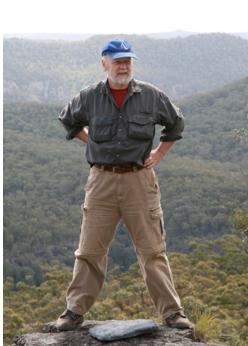
Floating Landcare In The Pittwater/Hawkesbury Area
A Plastic Ocean – Film Screening Avalon
 Thursday, November 17 at 7 PM - 10 PM
Thursday, November 17 at 7 PM - 10 PM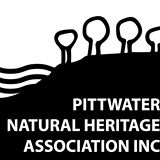
SUNDAY MORNING BIRDWATCHING with PNHA
Would you like to know more about our local birds and explore our bushland reserves? Then join us on one of our bird walks:
Our last walk of the year is at 7.30am on Sunday 27 November at Warriewood Wetlands. The summer migratory species will have arrived and the Wetlands will be home to nesting birds and birds with young. there should be plenty to see.Meet at Katoa Close, North Narrabeen.
Most walks last a couple of hours. Bring binoculars and morning tea for afterwards if you like. Contact pnhabirdwatching@gmail.com for details of each walk.
Crown Land Management Bill 2016
Australia Continues To Fly The Flag For Marine Protected Areas In East Antarctica
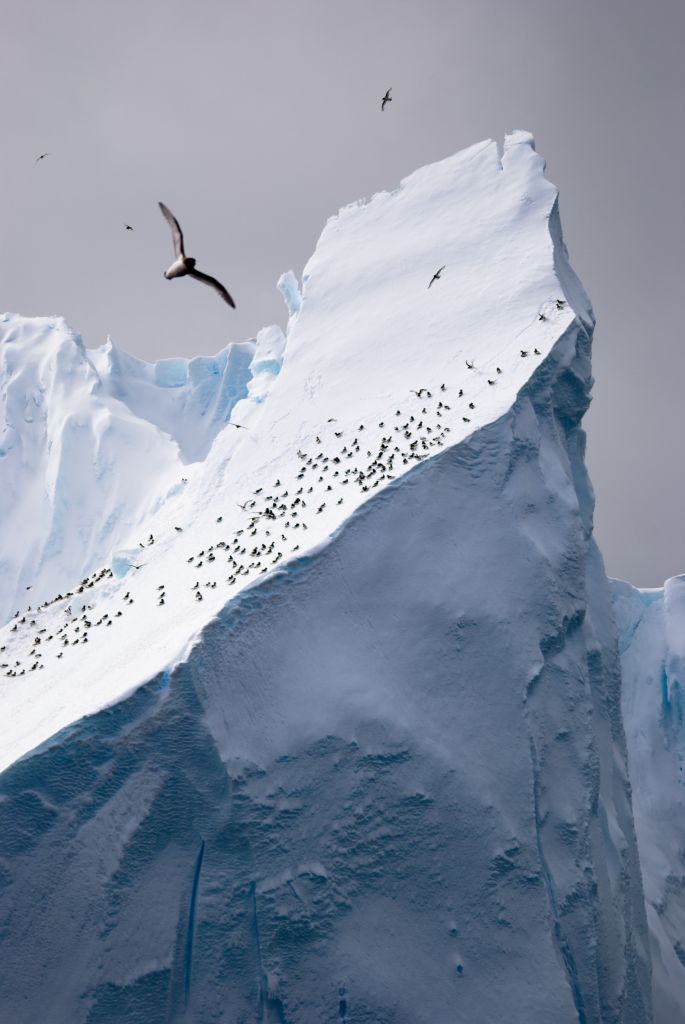
Public Consultation On The Revised Contaminated Land Management – Guidelines For The NSW Site Auditor Scheme
NPWS Lands Seven Finalists In NSW Tourism Awards
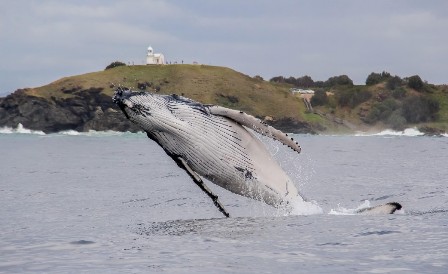
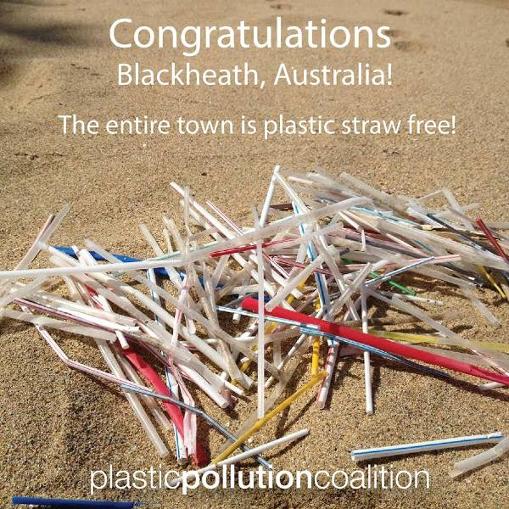
Barangaroo Delivery Authority Fined For Iron-Laden Water Discharge
DPI Soils Researcher Wins NSW Premier’s Prize For Science & Engineering
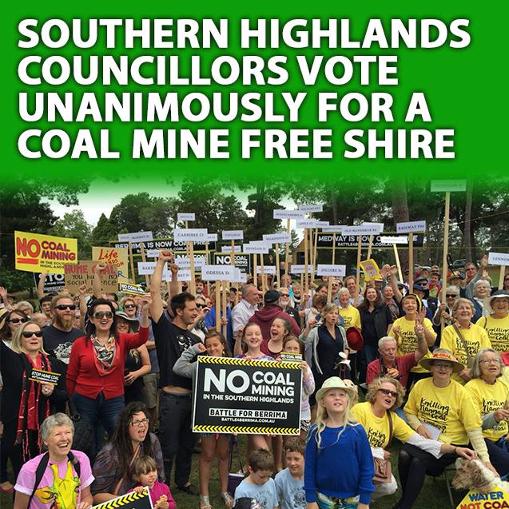
Commercial Aquaculture Trial Begins At Port Stephens
Nature In Cities: Can Urban Planners Enhance Human Well-Being Using Biodiversity?
Damaging Lupin Disease Confirmed In NSW
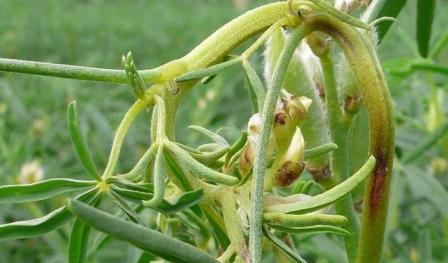
Soggy Start To Spring Improves Pasture Growth
Have Your Say On Modifications To A Sand Quarry In The Hills
- expand the approved extraction area by approximately 19 hectares
- extend the life of the quarry by 15 years until 2046
- use mobile crushers and mobile watering equipment
- import up to 100,000 tonnes per annum of clean recycled natural materials, such as soil and gravel, to be blended with the extracted sand.
Single Gene Linked To Some Cases Of Autism Spectrum Disorder
Cold Medicine Could Stop Cancer Spread, Study Shows
ACCC Releases Issues Paper For New Car Retailing Industry Market Study
Disclaimer: These articles are not intended to provide medical advice, diagnosis or treatment. Views expressed here do not necessarily reflect those of Pittwater Online News or its staff.
